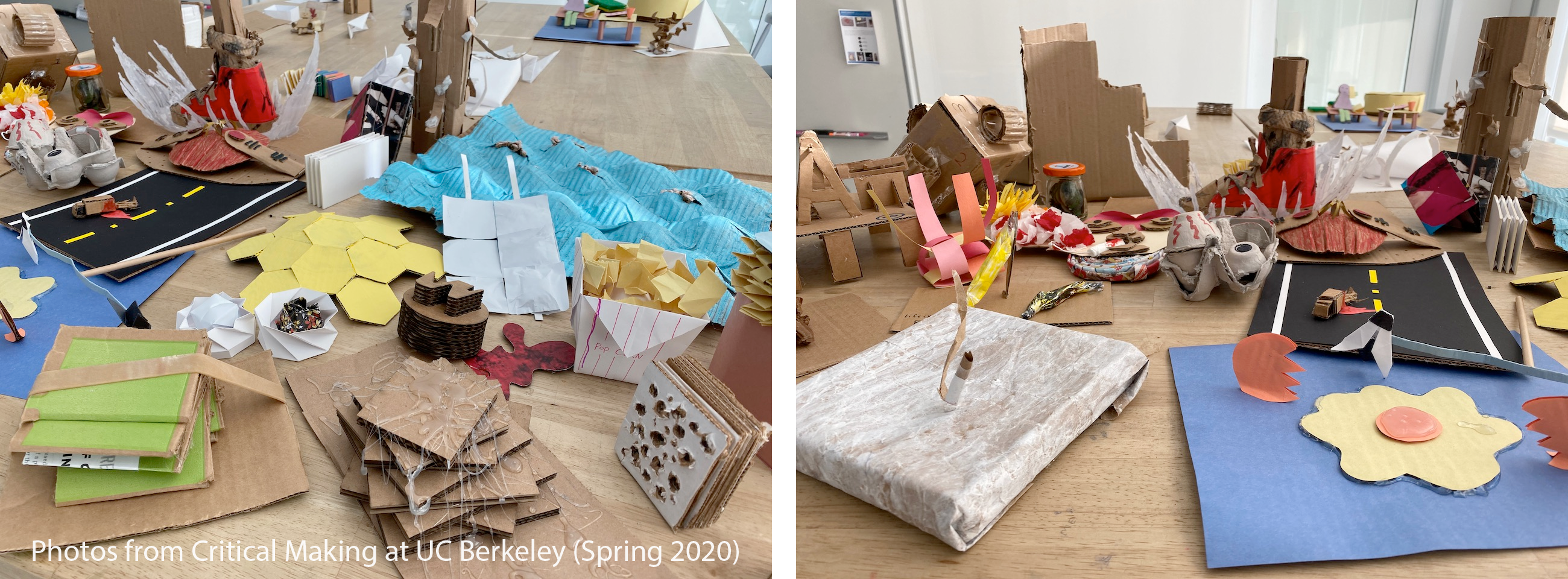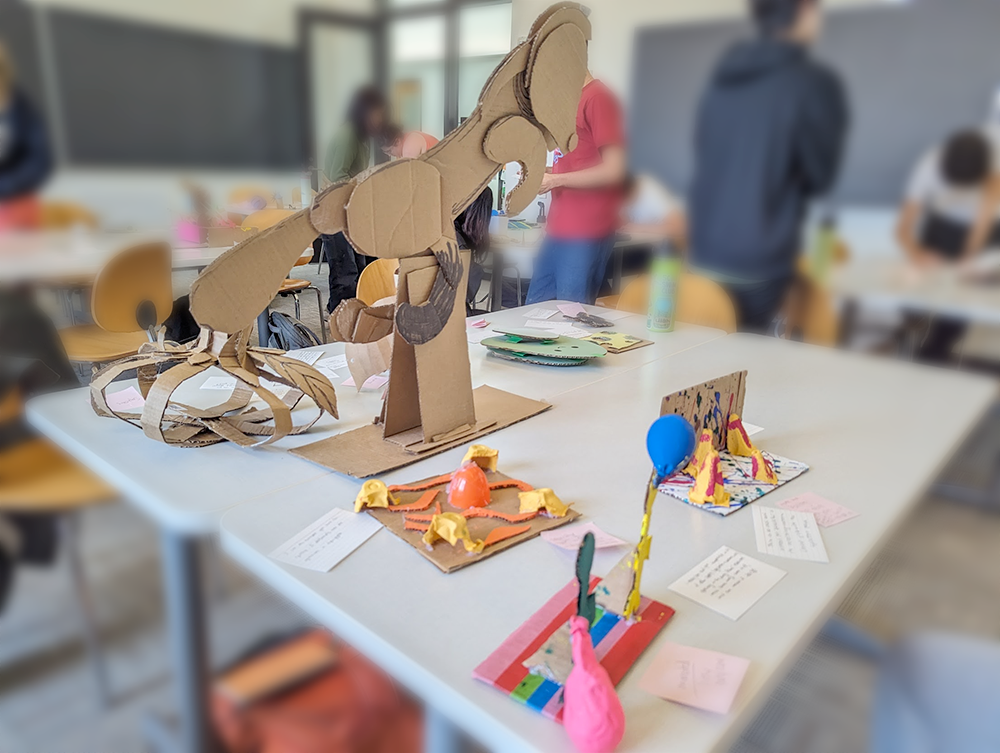Personal Making Assignment 2: Analog Making - Sensory Cardboard

Working only with cardboard, foamboard, and paper as the main materials for physical formgiving, express each of the three concepts below:
- Squishy
- Animated
- Light
You may also use color, glue, and tape in assembling your final artifact. You may use paint or markers or other found materials as surface decorations for your object, but the concepts should be expressed through the cardboard based forms, not the surface ornamentations. You may choose to make 3 separate artifacts (recommended) or one big artifact that captures all 3 concepts.
In addition to practicing 3D form giving, you should write a brief reflection paragraph about your cardboard journey after you’ve completed the objects.
- When working with the materials and your tools, what was hard or frustrating?
- How did the final form differ from what you had planned or envisioned in your head?
- What instances of reflection-in-action did you notice? For instance, did your approach to cutting, bending, assembling the cardboard change while you were doing the assignment, and if so, how?
- What instances of reflection-on-action did you notice? I.e., if you could go back and redo the assignment with the knowledge you have now, what would you do differently?
And, the general feedback questions:
- How long did this assignment take?
- How does the workload of this course compare to your expectations so far?
- Anything you’re confused about or anything else you wanted to mention about the assignment?



Tips & Resources
- Like in PM1, sketching and planning can go a long way. Before assembling any cardboard, try sketching out a few potential ideas for each concept.
- Cardboard comes in many different kinds: the thick corrugated ones (e.g., Amazon boxes), thinner flat cardboard (e.g., cereal boxes and other packaging), egg cartons, etc. Mix and match different kinds to your advantage.
- You may use other found materials (e.g, ribbon as phone wire or the wrapped string in the image at the top of the page), but they should not be the focus of the object: the form of the object should come from cardboard and paper only.
- Cardboard creations by Monami Ohno are beautiful intricate sculptures that I think show the upper end of what you can do with cardboard. Look at them for inspiration, but definitely don’t spend as many hours as this artist does!
Grading & Submission
On Canvas, submit a single PDF that contains:
- Documentation of your work through text and images. For each piece, take photos from at least 2 different angles and include 1-2 sentences about your thinking and intended vision.
- In addition to documenting the pieces, include at the end of the PDF your written overall reflection and feedback paragraph.
- Bring your piece(s) to class on Monday 9/16 for critique. If you borrowed any materials, please return them during this class too!
Estimated/expected time: It is my hope you spend no more than 6 hours on this assignment. Ideally, you will spend no more than 90 minutes brainstorming and sketching forms, as well as experimenting with physically manipulating cardboard/paper to give them form. Each individual piece should additionally take no more than 90 minutes to make.
Rubric
- ✓+ : Cardboard creations convey the prompts with thoughtful written descriptions and an overall tool reflection; cardboard creations have a visually dominating physical presence
- ✓ : Cardboard creations convey the prompts with thoughtful written descriptions and an overall tool reflection
- ✓- : Missing at least 2 photos or written reflection for each piece, or overall tool reflection/feedback. A piece conveys the prompt not through cardboard form, but through non-cardboard surface ornamentations or overrelies on non-cardboard objects for the form giving